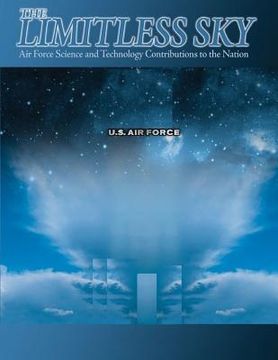The Limitless Sky: Air Force Science and Technology Contributions to the Nation (Black and White) (en Inglés)
Reseña del libro "The Limitless Sky: Air Force Science and Technology Contributions to the Nation (Black and White) (en Inglés)"
The first paper tells the story of GPS. It is not only a story of scientific and technical achievement, but also one of suspense that illustrates the difficulties of introducing revolutionary technologies. The failures and successes in that program attest to the vision and perseverance of the people who made it happen. The GPS finally solved the problem that had challenged seafarers since antiquity. It has also enabled a multitude of civilian and military applications.The second paper looks at a development that has revolutionized the employment of air power. The use of laser research and the GPS has enabled ever-increasing precision strikes at ever-increasing distances. From tens of bombers dropping hundreds of bombs to hit a singletarget in World War II, now a single aircraft can strike several targets. Precision also raises expectations for minimizing collateral damage and puts high priority on detecting targets, identifying them correctly, and tracking them. Advances in electro-optical/infrared imaging, in radar, and in lasers have become the triad for remote sensing, where the objective has been to "overcome the problems of great distances, weather, and darkness," articulated by von Kármán.The third paper focuses on infrared cameras from their first beginnings to their employment inunmanned aerial vehicles such as the Predator and Global Hawk. The fourth paper looks at airborne radar, whether in AWACS or in Joint STARS, two systems that have revolutionized the conduct of air-to-air and air-to-ground operations. Soon after the first powered flight in 1903, the effects of the high altitude environment on the performance of pilots became a concern. Research on the effects of hypoxia went back to balloonists in the late nineteenth century. With the creation in 1918 of the Air Service Medical Research Laboratory, it became possible to establish the scientific foundation for the development of a wide variety of equipment, from oxygen masks to the pressure suits of today, that would enable air crews to fly higher and for longer periods of time. The fifth paper traces that history and the accomplishments of such pioneers as Armstrong, Stapp, and Kittinger. The paper also includes the story of a particular mission of the SR-71, an aircraft that flew at 80,000 feet, at the edge of space, at three times the speed of sound-an extreme environment indeed. The sixth paper, not presented at the symposium, describes the Air Force research in weather, not only the effort to understand terrestrial weather, but also space weather. The launching of U.S. satellites, which started in 1958, led to the discovery of the Van Allen belts. This was a major scientific discovery that began the mapping of the space environment, a necessary condition for sending unmanned and manned spacecraft to space. To reach space, whether for scientific, military, or commercial purposes, a launch capability was needed. In the early years of the space age, this capability was provided by theAir Force's long-range ballistic missiles-Atlas, Titan, and Thor. The seventh paper records the history and the systems that have allowed the U.S. to launch satellites that have provided extraordinary sensing capabilities and global communications. The evolution of military satellite communications from concept to reality, an indispensable capability for today's Air Force, is documented in the eighth paper.Finally, as we start the second century of powered flight, the Air Force is once more expandingits capabilities using advanced technology. The wave of the future is directed energy that isexpected to revolutionize the science and art of warfare. Since the invention of the laser in the1960s, the Air Force has been conducting research and development for an operational platformthat would use lasers to destroy ground or air launched missiles.

